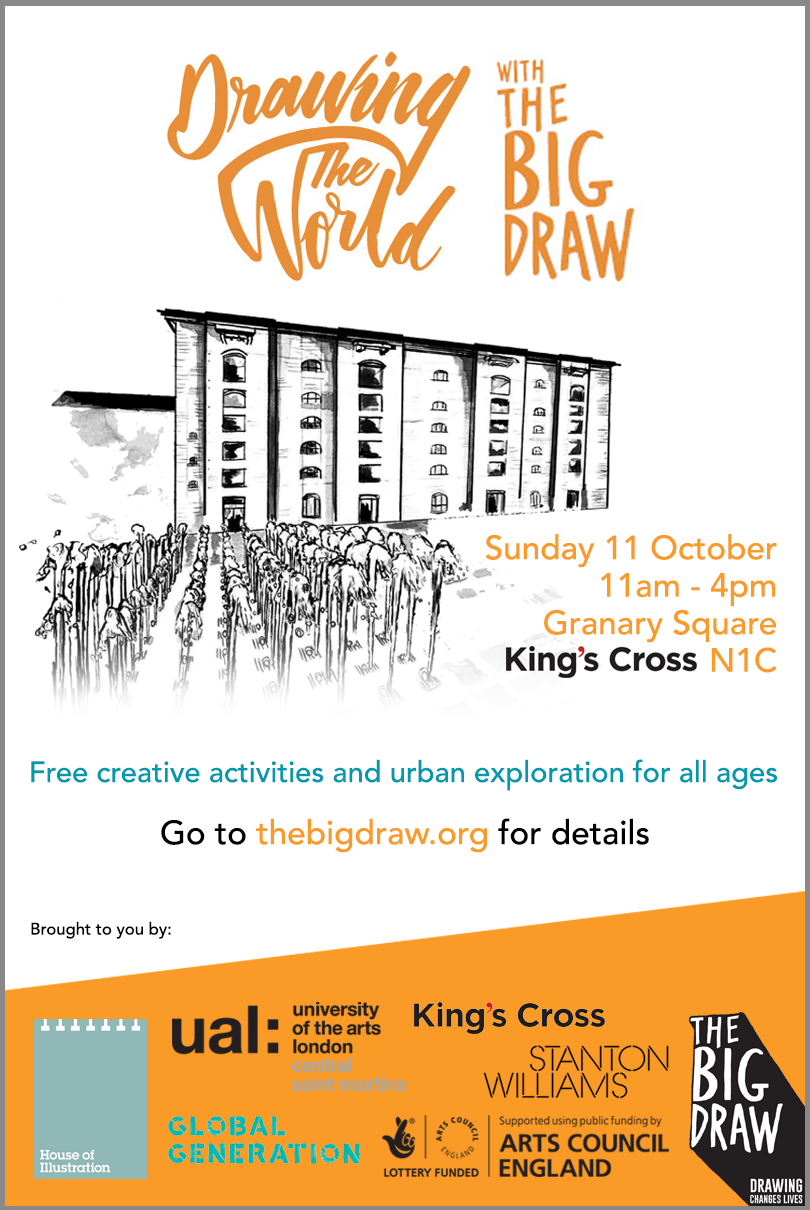Fauzia Akbar was a second year BA Drawing student at Camberwell who sadly passed away last June. Opening in the Spring term, Camberwell Space Projects will host an exhibition to celebrate her prolific talents that will demonstrate her love of art and enthusiasm for making.
Curated by Kelly Chorpening, artist and course director for BA Drawing at Camberwell, the exhibition will explore the ways in which her work explored the allegories and symbolism of Western art history through a combination of drawing, painting and embroidery techniques. Accompanying the show will be an exhibition by staff and students, who will take inspiration from art history to create new works, a fitting tribute to Fauzia Akbar’s life and work.
We spoke to Kelly about Fauzia’s love of storytelling and how students and staff have responded to her use of multiple techniques and art historical references.
How did this exhibition of Fauzia’s work come about?
We really wanted to mark the sad occasion of Fauzia’s passing with a celebration of her talent and creativity. Fauzia was a mature student on the course, so came to us with years of experience, of appreciating art and making work. She was finally fulfilling her dream to do an art degree. So there will be an exhibition of her work, alongside an exhibition of student work made in response to Fauzia’s techniques and ideas.
Can you please tell me more about her practice?
To create this exhibition, we had to go through all of Fauzia’s work, including a huge number of sketchbooks. What comes through is a love of storytelling. She loved historical paintings that depicted subjects through the narratives of the Bible and Greek mythology. These were often related to the present condition, with a very personal take on age-old themes. One of her greatest strengths as an artist was her use of embroidery. Fauzia’s family are originally from Pakistan, and the use of embroidery is a tradition going back generations. Examples of work by both her mother and grandmother will be on display in the exhibition. Within fine art, Fauzia’s work was developing in inventive ways that integrated different techniques and traditions. In many pieces, you might recognise the influence of historical artists such as Sandro Botticelli or Lucas Cranach, or contemporary ones like Grayson Perry and Paula Rego, but how these influences were translated into embroidery, and consolidated pictorially was something truly unique to Fauzia.
What do you particularly like and appreciate about her work? Is there a piece in the exhibition that you are particularly fond of?
Yes, the picture we’ve used to advertise the exhibition was in one of Fauzia’s sketchbooks. It was made on thin cotton fabric that had been painted with oil paint. The imagery was created through a mixture of painting, drawing and stitch. She was working from an Edgar Degas painting of a ballet dancer, and clearly this accounts for the figure in the middle, as well as the colour. However, the addition of the birds flanking the dancer were not in the original painting, so what Fauzia intended is unclear, but the result is oddly captivating.
Can you also tell me how you went about curating the exhibition of work by staff and students which accompanies Fauzia’s, and tell me some more about the ways in which they are inspired by art history?
We encourage students to learn from the past by examining historical artworks, copying them, and sometimes appropriating elements. For as long as the Drawing course has been running it’s had a close relationship with the National Gallery, especially its Special Projects Curator Colin Wiggins, who brings the collection to life for students today in a really lively way. The call we put out to students has asked students to think about working with this approach, as Fauzia so often did, to create new work for the exhibition.
Can you tell us a bit about your own practice as an artist and how this might relate to the exhibition?
A few members of staff will be showing work as part of this exhibition too. I will show a drawing that depicts the back of a well-known Giotto painting of St. Francis receiving the stigmata. Unlike other work I have made recently, this one reveals a trace of the front of the painting. I thought it would work well in relation to Fauzia’s work.
Find out more about the exhibition on the event page.
Find out more about BA Drawing at Camberwell.



